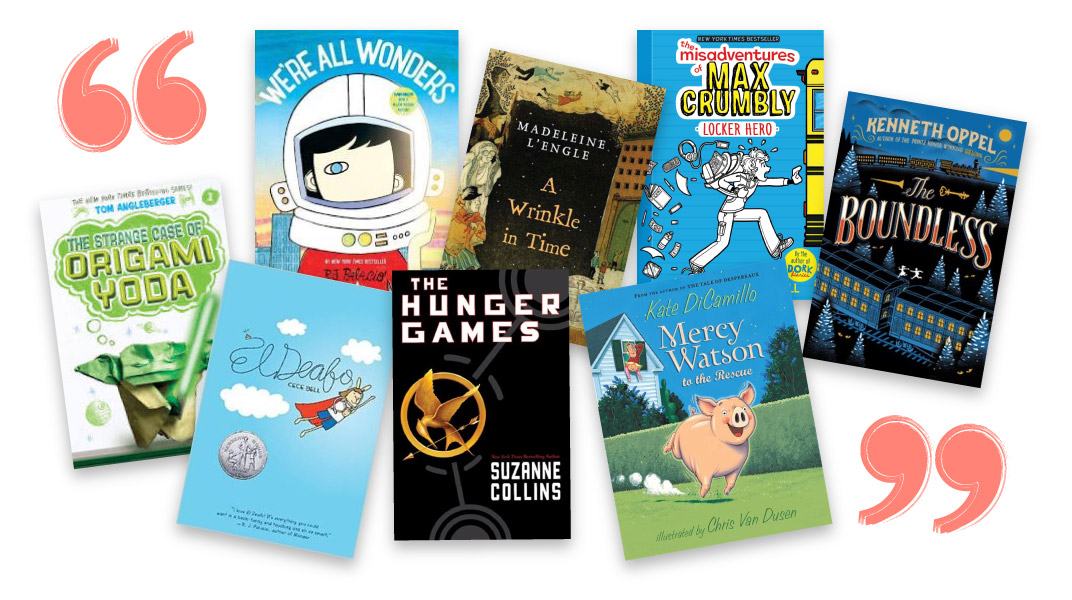by Katy Tessman, New School Services Project Manager and Maker Specialist at Mackin
Having students engaged and motivated in reading is one of our goals as educators. Therefore, it is important to develop a positive and supportive reading culture throughout your school. In addition to the librarian being excited about reading, it is essential to have the commitment of the principal and staff to be part of creating a positive school-wide reading culture. When school leaders show their enthusiasm for reading, students become more enthusiastic to read as well.1
What better way to generate excitement about reading than to present book talks. Book talks are a powerful way of encouraging reading to students. These lively, quick presentations highlight elements in a book that made you think, feel, or even want to change the world.
Following are three important steps in creating interesting book talks. These parameters can be shared with staff and students on what to include (and what not to include) in book talks.
Step 1: Pick
Every time you start reading a book, think if it would be a good title to share as a book talk. The best way to select a book for a presentation is to pick a book that you really enjoy and has a strong theme related to the group you’ll be presenting to. Elementary students may enjoy learning about historical fiction, biographies of contemporary leaders, as well as stories about friendship and kindness. In secondary schools books about relationships, women’s history, violence, and human rights are likely to resonate with the audience. While you’re reading, prepare for your book talk by taking notes, place sticky notes on pages with important plot twists, favorite lines, and parts that you connect with. If you like what you’ve read then your book talk will be interesting and inspiring.

Step 2: Plan
TIP:
It’s always a good idea to let your school librarian know you’re giving a book talk so they can be prepared for any demand that the book talk may generate.
After you’ve selected the book you want to share, it’s time to start planning your book talk. There are many ways to present a book talk. You could make a movie trailer using the iMovie app on an iPad. (Partner with your Technology Integration / Media Specialist or visit Common Sense Education for a lesson plan idea.) Or perhaps you want to use a prop or costume pieces to help “sell” the book. Using a green paper origami finger puppet would be helpful when talking about Tom Angelberger’s Origami Yoda. Wearing an astronaut space helmet when talking about R.J. Palacio’s book We’re All Wonders would get the listeners’ attention. Maybe you want to draw your book talk on the white board for presentations on books like Cece Bell’s graphic novel biography El Deafo or Rachel Renee Russell’s illustrated novel The Misadventures of Max Crumbly. (There are several examples of book talks on YouTube and Pinterest; most children’s book publishers have their own channel which can be a valuable resource for teachers who are just starting these talks.) Sharing why you want others to read certain books will encourage them to pick it up and read it. The key to a successful book talk is to “sell, don’t tell.” Thus, a book talk is more of an advertisement or a commercial for the book.2
Step 3: Present
Lure them in. Engaging your audience is essential. Start your book talk with a hook that will get the audience’s attention. This can be verbal, like reading one of your favorite lines in the book. First sentences are usually quite powerful, like “It was a dark and stormy night.” from Wrinkle In Time by Madeleine L’Engle. Ask questions; take a poll. Or you could start your book talk with something completely different, like singing the Hanging Tree song from Suzanne Collins’s Hunger Games or acting out an action scene, like hopping train car to train car from The Boundless by Kenneth Oppel. Serving toast with a great deal of butter would be an appropriate and engaging way to start your book talk about Kate DiCamillo’s Mercy Watson series.
Do
- Be yourself
- Do your own thing
- Show the book
Don’t
- Select a book that does not interest you
- Talk too long
- Give away the ending
Keep it short. The most effective book talks are brief, a 30-second advertisement is good however 1-3 minutes long can be effective depending on your audience. Summarize the story keeping in mind not to spoil the ending. Name the title and the author of the book. Mention the genre of the book, identify the problem, and name the main characters (especially the character you identify with most). Share your opinion of the book. Tell the audience why you want others to read the book. Be sure to leave time at the end to answer any questions. Leaving your audience wanting more is a sign of a successful book talk.
Show the book. It’s important to have a copy of the book to show the audience. Showing the book cover and how thick the book is can make or break the “sale” of the book. If you have ideas about how the book cover could be better, be sure to share your thoughts. It’s also good to flip through the pages so the audience can see how large the type is and how much white space is on the pages. You could build suspense by waiting to name your book and author at the end.
Book talks can be fun and free-spirited, yet the academic benefits of incorporating book talks into your curriculum are limitless. Book talks get students to try out a new title, author, or genre. They get students reading and sharing with each other. Book talks teach note-taking and how to write summaries. They build presentation skills as well as listening skills. Book talks give students a nudge to find a book they love and the desire to convince their peers to read it.3 Book talks can also help students create their own personal lists of books that have caught their interest for future reference. This “To-Be-Read” or “Someday Reads” title lists are important resources for students when they visit the library.
Having a school-wide reading culture, supported by the principal and teachers will help students become engaged and motivated readers. Book talks are about helping to make connections between books and readers, scaffolding choices, and building interest and enthusiasm.
Resources:
1 Skinner, J. (August 13, 2018). Book talking — tips to fire a passion for reading. National Library. Available at: https://natlib.govt.nz/blog/posts/book-talking-tips-to-fire-a-passion-for-reading
2 (n.d.) Booktalking Tips. Pikes Peak Library District. Available at: https://ppld.org/teens/booktalking-tips
3 Cleaver, S. (July 2, 2018). What is a Book Talk? Your Guide to Making Them Work in the Classroom. We Are Teachers. Available at: https://www.weareteachers.com/what-is-a-book-talk/






